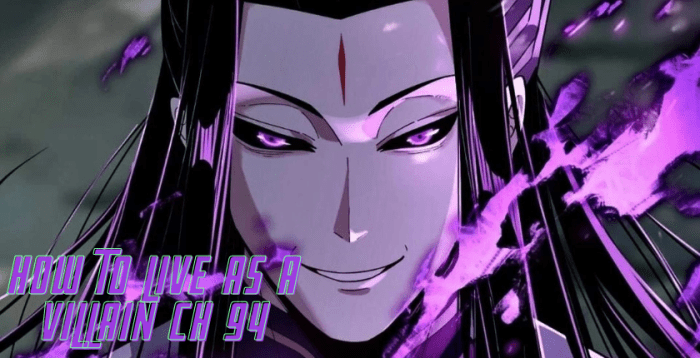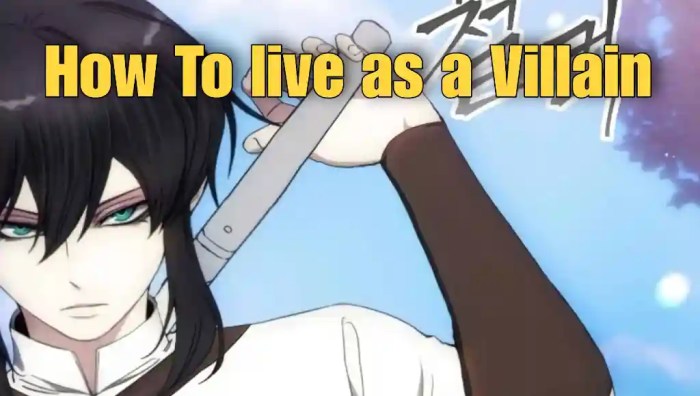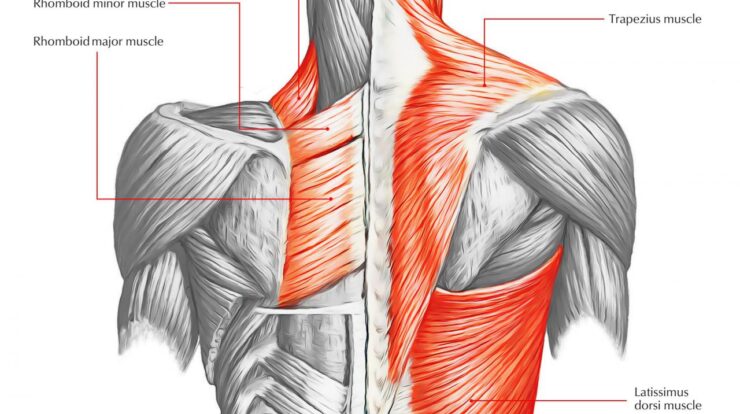
Buckle up, folks! In this edition of how to live as a villain ch 94, we’re delving into the dark and twisted world of villains. We’ll uncover their warped moral compasses, dissect their cunning strategies, and explore the depths of their villainous minds.
So, grab your black capes and get ready for a wild ride through the annals of villainy.
Villains aren’t just evil for the sake of it. They have their own twisted sense of justice, their own reasons for doing what they do. We’ll delve into the motivations that drive them, the schemes they concoct, and the psychological turmoil that shapes their every move.
Villainy’s Moral Compass

Villains, contrary to popular belief, are not driven solely by malice or a desire for chaos. They often possess a twisted sense of justice or a distorted view of morality that guides their actions. Their motivations can be complex, stemming from personal experiences, societal injustices, or a misguided belief in their own superiority.
Motivations of Villainy
Villains’ motivations vary widely, but some common themes include:
- Revenge:A desire to exact retribution for perceived wrongs or injustices suffered in the past.
- Power:A craving for control and dominance, often driven by a belief in their own superiority.
- Ideology:A commitment to a twisted or extreme ideology, which they believe justifies their actions.
- Despair:A sense of hopelessness or nihilism that leads them to embrace chaos and destruction.
Twisted Sense of Justice
Some villains believe they are enacting justice, even if their methods are cruel or unconventional. They may view themselves as vigilantes, punishing those they perceive as evil or corrupt. Their distorted sense of morality often leads them to justify their actions as necessary to protect the innocent or maintain order.
Examples of Villainous Morality
* Thanos (Marvel Comics):Believed that halving the universe’s population was necessary to prevent overpopulation and ensure the survival of all life.
Joker (DC Comics)
Embraces chaos and anarchy, believing that society is inherently corrupt and should be destroyed.
Lex Luthor (DC Comics)
Views Superman as a threat to humanity and believes that his own superior intellect should guide society.
Villainous Schemes and Strategies
Villains are known for their cunning and elaborate plans. They employ a variety of strategies to achieve their goals, including manipulation, deception, and outwitting their opponents.
One common strategy is to use deception to gain an advantage. Villains may lie, cheat, or forge documents to trick their enemies into doing what they want. They may also use disguises or aliases to hide their true identities.
Another common strategy is to manipulate others. Villains may use flattery, threats, or blackmail to get people to do what they want. They may also use psychological tricks to control their victims’ minds.
Finally, villains often use their intelligence to outwit their opponents. They may come up with clever plans or use their knowledge of their enemies’ weaknesses to defeat them.
Examples of Villainous Schemes, How to live as a villain ch 94
- In the movie “The Dark Knight,” the Joker uses a series of elaborate plans to terrorize Gotham City. He blows up a hospital, kidnaps the mayor, and poisons the city’s water supply.
- In the TV show “Breaking Bad,” Walter White uses his chemistry skills to cook meth and become a drug kingpin. He uses deception, manipulation, and violence to achieve his goals.
- In the video game “Grand Theft Auto V,” the player character Michael De Santa uses a variety of criminal schemes to make money. He robs banks, steals cars, and kidnaps people.
The Psychology of a Villain

The psychology of a villain is a complex and fascinating subject. Villains are often driven by a variety of psychological traits and motivations, including a desire for power, revenge, or control. They may also suffer from emotional turmoil, inner conflicts, and other psychological disorders.
In this section, we will explore the psychology of villains and provide examples of villains who exhibit specific psychological traits.
Psychological Traits of Villains
There are a number of psychological traits that are commonly associated with villains. These traits include:
- Narcissism: Villains often have an inflated sense of self-importance and a lack of empathy for others.
- Machiavellianism: Villains are often manipulative and cunning, and they are willing to use any means necessary to achieve their goals.
- Psychopathy: Villains often lack empathy and remorse, and they may engage in impulsive and aggressive behavior.
- Sadism: Villains often enjoy inflicting pain and suffering on others.
Motivations of Villains
Villains are often driven by a variety of motivations, including:
- A desire for power: Villains often seek power over others, and they may use any means necessary to achieve it.
- A desire for revenge: Villains may be motivated by a desire for revenge against those who have wronged them.
- A desire for control: Villains often seek to control others, and they may use any means necessary to achieve it.
Emotional Turmoil and Inner Conflicts
Villains often experience emotional turmoil and inner conflicts. They may struggle with feelings of guilt, shame, and remorse, and they may be torn between their desire for evil and their desire for good. These inner conflicts can lead to self-destructive behavior and ultimately to the villain’s downfall.
Examples of Villains with Specific Psychological Disorders
There are a number of villains in literature and film who exhibit specific psychological disorders. These villains include:
- The Joker(from the Batman comics and films): The Joker is a psychopath who enjoys inflicting pain and suffering on others.
- Hannibal Lecter(from the Hannibal Lecter novels and films): Hannibal Lecter is a cannibalistic serial killer who is also a brilliant psychiatrist.
- Darth Vader(from the Star Wars films): Darth Vader is a powerful Sith Lord who is motivated by a desire for power and revenge.
Villainous Alliances and Rivalries
Within the realm of villainy, alliances and rivalries shape the landscape, driving narratives and influencing the actions of those who dare to embrace the darkness. These alliances and rivalries are often born out of shared goals, conflicting interests, or a thirst for power.
Yo, check it, if you’re down to live that villain life, then you gotta hit up how to live as a villain ch 94 . It’s the real deal, with all the tips and tricks you need to make your enemies tremble.
So, step up your game and become the baddest villain in town!
Alliances
When villains unite, they form formidable alliances, pooling their resources, knowledge, and skills to achieve their sinister objectives. These alliances can be temporary, forged for a specific purpose, or long-lasting, cemented by mutual trust and a shared vision. Shared goals, such as the overthrow of a common enemy or the acquisition of a powerful artifact, can motivate villains to set aside their differences and work together.
Yo, check it, you wanna learn how to live like a villain? Head on over to how to live as a villain ch 94 and get all the juicy details. From plotting evil schemes to conquering the world, they got you covered.
So, embrace your inner baddie and dive into the world of villainy today!
For instance, in the epic fantasy series “The Lord of the Rings,” Sauron, the Dark Lord, forms an alliance with Saruman, the treacherous wizard, to conquer Middle-earth. Their shared desire for power drives them to unite against the forces of good.
Rivalries
On the other hand, rivalries among villains are equally prevalent. These rivalries stem from conflicting goals, personal vendettas, or simply a clash of egos. Villains may compete for territory, resources, or the attention of their followers, leading to bitter and often deadly confrontations.
Yo, peep this, the latest drop on how to live as a villain ch 94 is fire. It’s got all the deets on how to master your evil skills and take over the world. So, if you’re ready to unleash your inner baddie, click here and get the scoop on how to live as a villain ch 94.
In the popular comic book series “Batman,” the rivalry between Batman and the Joker is a classic example of the intense hatred and conflict that can exist between villains. Their opposing ideologies and methods drive them to clash time and time again.
Villainous Hideouts and Lairs: How To Live As A Villain Ch 94

In the realm of villainy, a lair is not merely a place of residence but a sanctuary, a fortress, and a symbol of power. From the depths of secluded mountains to the heart of bustling cities, villainous hideouts come in all shapes and sizes, each reflecting the unique personality and modus operandi of its occupant.These
lairs are more than just living quarters; they are meticulously designed to provide their nefarious inhabitants with strategic advantages, technological advancements, and impenetrable security measures. Hidden compartments, secret passages, and advanced surveillance systems ensure that the villain’s plans remain confidential and their identity concealed.
Design and Features
The design of a villainous lair is often as distinctive as the villain themselves. Some prefer sprawling underground complexes, complete with subterranean tunnels and hidden chambers. Others opt for towering skyscrapers, offering a commanding view of the city they terrorize.The
lair’s interior is a reflection of the villain’s personality and ambitions. A mad scientist’s lair may be filled with bizarre contraptions and bubbling beakers, while a cunning mastermind’s lair could resemble a high-tech control room, with multiple monitors and a sophisticated network of computers.
Yo, peep this out! If you’re into that whole villain vibe, then you need to check out how to live as a villain ch 94 . It’s got all the tips and tricks you need to be a master manipulator and rise to the top.
So don’t be a hater, hop on over and learn how to crush it as a villain.
Technological Advancements
Villainous hideouts are often equipped with cutting-edge technology to aid their occupants in their nefarious schemes. These advancements range from advanced surveillance systems to weapons labs and communication arrays. Some lairs even boast their own private armies or fleets of vehicles.
Security Measures
Protecting their lair from intrusion is paramount for any villain. As such, they employ a range of security measures to keep their hideouts impenetrable. These measures can include biometric locks, motion sensors, and even armed guards. Some lairs are even hidden in plain sight, disguised as ordinary buildings or businesses.
Iconic Villainous Hideouts
Throughout history, certain villainous hideouts have become synonymous with their occupants, becoming iconic symbols of evil. From the Joker’s abandoned amusement park in “Batman” to Darth Vader’s Death Star in “Star Wars,” these lairs have left an unforgettable mark on popular culture.These
iconic hideouts are not merely settings but extensions of the villains themselves. They represent their power, their ambition, and their twisted worldview. They are places where heroes fear to tread and where the forces of darkness gather to plot their sinister schemes.
Last Recap
From their moral compasses to their psychological profiles, we’ve covered the essential elements of how to live as a villain ch 94. Remember, being a villain isn’t just about causing chaos; it’s about embracing a twisted worldview and executing it with cunning and precision.
So, whether you’re a seasoned villain or just starting your journey down the path of darkness, this guide has given you the tools you need to succeed. Now go forth and conquer, my fellow villains!
Answers to Common Questions
What’s the difference between a villain and a hero?
It’s all about perspective, my friend. Villains see themselves as heroes fighting for their own twisted version of justice, while heroes see villains as obstacles to be overcome.
How do villains justify their actions?
They have their own moral code, a warped sense of right and wrong. They believe their actions are necessary, even if they involve breaking the law or harming others.
What’s the most important trait for a villain?
Cunning. A villain needs to be able to outsmart their opponents, manipulate situations, and always stay one step ahead.






